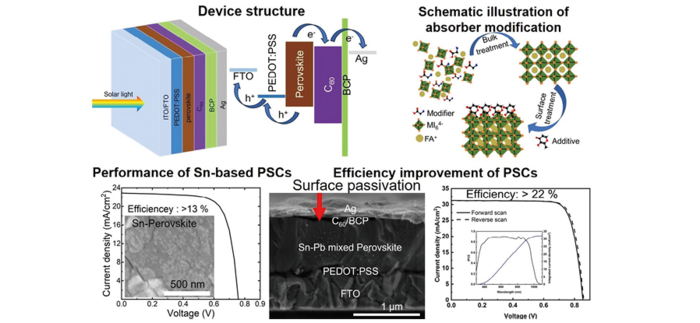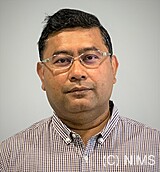- Address
- 305-0047 茨城県つくば市千現1-2-1 [アクセス]
研究内容
- Keywords
Organic/inorganic interface, Photochemistry and Photovoltaics
出版物2004年以降のNIMS所属における研究成果や出版物を表示しています。
エネルギー・環境材料研究センター
Organic-inorganic hybrid solar cells
Solar cell, Perovskite, Dye-sensitized, Interface, Stability, High efficiency
概要
Photovoltaic (PV) systems-have very little impact on the environment, making them one of the cleanest power-generating technologies available. Organic-inorganic hybrid perovskite solar cells has high potential as a next generation PV due to its rapid increase in the power-conversion efficiency. Improvement in durability and efficiency through the development of intelligent materials and new device structure are the current issues facing these solar cells. The key concerns are the development of an environmentally friendly lead-free perovskite layer and new charge carrying materials (ETM and HTM).
新規性・独創性
• Materials engineering strategies to synthesize and fabricate stable perovskites.
• Size controlled growth of perovskite crystals and reactive surface engineering
• Development of inverted perovskite architecture with high stability
• Development of Pb free Sn-PSCs with new levels of efficiency and operational stability
• Development of low band gap stable Sn-Pb based PSC for tandem solar cell.
内容

We have successfully fabricated highly stable Pb-PSCs, toxic Pb free Sn-PSCs and low band gap Sn-Pb-PSCs through materials engineering strategies, reactive perovskite surface and unique device architectural engineering. The rapid crystallization process of tin halide perovskite compounds results in severe electronic defects which limits the open circuit voltage. We implement bifunctional and electron withdrawing additives with FASnI3 to reduce the electronic defects and enhance electron transportation.
まとめ
The efficiency and operational stability of PSCs are heavily influenced by the inherent features of perovskite films, such as trap densities, defects forming at grain boundaries and interfaces, and bandgap mismatching. To facilitate the development of highly efficient and stable perovskite solar cells and their upscaling for practical applications we focused on the strategies through innovative ideas on materials compositional engineering, and defect passivation using novel additive and interfacial engineering.

